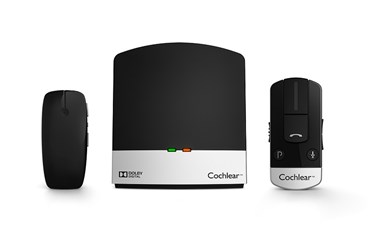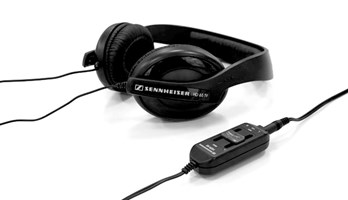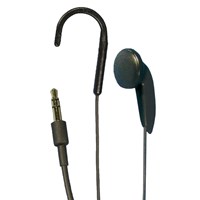Single-sided deafness
Unilateral or single-sided deafness refers to hearing loss in one ear, which can range from mild to profound. There are different types of hearing technology, such as hearing aids and bone conduction hearing devices, which can be helpful for children with unilateral deafness. We explore some of the options…
Autumn 2022 Families magazine
What hearing technology is available for my child?
Various hearing technology is available for children with unilateral deafness, dependent on the type and level of hearing loss in the affected ear.
Hearing aids
These are typically worn behind the ear and their job is to make sounds louder and clearer. They can be fitted for permanent deafness, and can also be used on a temporary basis for children with glue ear. An audiologist will programme the hearing aid to suit the hearing loss in the child’s affected ear.
CROS (contralateral routing of signal) aids
These are intended to be used by children with a profound unilateral deafness. They look similar to a hearing aid, but don’t amplify sounds. Instead, they consist of two units – a microphone and a receiver. The microphone is worn on the deaf ear and connects to the receiver worn on the hearing ear via wireless technology. The sound signal is sent from the unit on the deaf ear to the receiver worn on the hearing ear, allowing a child to hear the sounds from their deaf ear’s side.
Bone conduction hearing devices
These are suitable for a child with unilateral hearing loss or conductive deafness, where the sound can’t pass efficiently through the outer and middle ear to the inner ear. This could be due to blockages, glue ear, persistent middle ear infections, microtia (under-development of the outer ear) or atresia (under-development of the ear canal). They work by transmitting sound vibrations through the skull bone to the cochlea of the inner ear. There are various types available, non-implantable and implantable, and they can be worn on a band, attached to the head with a surgically-implanted abutment, or connected magnetically to an internal implant.
Personal radio aids
These are suitable for mild, moderate, or unilateral hearing loss, and can be used if your child doesn’t wear a hearing aid. They are worn like a hearing aid on the hearing ear and wirelessly receive the radio signals from the radio aid transmitter (microphone), sending the sound directly to the child’s ear to enable them to hear the speaker more clearly. The microphone can be worn around a speaker’s neck, such as a teacher, or plugged into a multimedia device.
Other technology for unilateral deafness
As well as hearing technology, there’s lots of other technology that works with hearing aids, CROS aids and bone conduction hearing devices, that might be useful. It’s worth trying these out with your child and seeing if they work for them.
Streamers
These can be useful to use with hearing aids and bone conduction hearing devices. They transmit audio from a range of sources directly to the hearing device. Manufacturers tend to make streamers that work with their own hearing devices so check out the brand’s website. Streamers can consist of TV transmitters, wireless microphones and Bluetooth receivers, that can stream audio from compatible technology like your TV or phone.
Headphones
There are mainstream products which may work for your child. Look out for headphones with a separate volume control for each ear. Also, make sure the ear cups are large enough to fit comfortably over any hearing aids worn.
Bone conduction headphones
This mainstream technology is suitable for children with conductive deafness, as they transmit the sound as vibrations through the bones in your head and jaw directly to the inner ear. They’re worn similarly to a headband and do not cover the ears, so the child will still be able to hear environmental sounds, for example when walking by the road and when out and about.

Music-Link-D 50/50
This is essentially a pair of earphones for use with hearing devices. It consists of an earhook that’s worn over the ear to transmit audio to the hearing aid or cochlear implant using its integrated telecoil program. The other earpiece is a standard earphone that is put into the hearing ear. The device is simply plugged into any 3.5mm audio jack to listen to sounds and music from a phone, tablet, or other multimedia device.

Tina, mum to Charlie (11), shares her son’s experience of using technology with a single-sided hearing loss.
“Charlie was born with left-sided microtia atresia and wears a Cochlear BAHA 6 [a type of bone conduction hearing device] to help him hear. Charlie thinks the best thing about having the BAHA 6 is that it gives him so much more hearing than if he didn’t have it. On the flip side, the only negative he can think of is that it’s quite noticeable on his head.
Charlie enjoys connecting his BAHA 6 to his phone or iPad which he uses to stream music and videos. He also has a Cochlear Mini Mic 2 [a type of radio aid] that connects to his BAHA, which comes in handy when we’re in noisy places or if Charlie is sat in the back of our 7-seater car! Also, Charlie’s teacher sometimes wears his Mini Mic in the classroom.”

